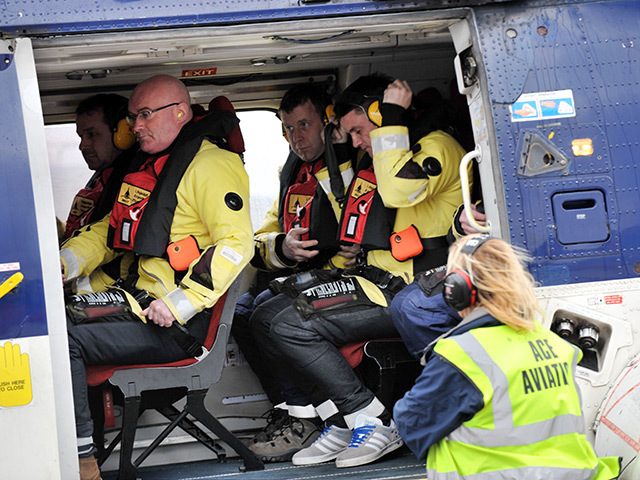
The company behind the Super Puma helicopter has announced plans to change the seating set-up inside the aircraft, we can reveal.
Eurocopter has pledged to increase the number of seats facing forward following a string of accidents in the North Sea.
Oil workers have raised fears about the seating configuration inside the helicopters following last month’s fatal accident off Shetland. One of the four people who died when the Super Puma plunged into the North Sea was unable to escape from the aircraft.
A task group made up of industry leaders will investigate whether the way “cramped” workers sit can be made safer.
However, it has now emerged that Eurocopter is to introduce new seats in its EC225 models.
“Based on operators’ and oil companies’ feedback, Eurocopter has designed and is currently introducing new cabin seats which will increase passengers comfort during flight,” the firm said in a statement to workers online.
“Further, Eurocopter is designing an improved 19 passengers seating layout for the EC225 in order to improve passengers’ comfort.
“This alternative layout should increase the comfort of the passengers, especially the ones seated at the rear of the cabin in the club configuration and increase the number of seats facing forward.”
A spokesman for the firm added: “A Eurocopter team has arrived in Aberdeen to consult with relevant stakeholders to find out what is desired and what is possible concerning potential changes to seating configuration of Super Pumas to address workforce concerns.”
Earlier this month, Oil and Gas UK’s chief executive, Malcolm Webb, confirmed that a review of the way workers are seated when travelling offshore was now being launched “as a priority”.
“One of the concerns which has come up is the seating configuration within helicopters, and the Helicopter Safety Steering Group (HSSG) is putting together a working group to look at that as a priority,” he said.
HSSG’s Les Linklater said many workers feel cramped inside the helicopters.
The review of helicopter seating has been welcomed by one of the industry’s leading figures – Wood Group chief executive Bob Keiller. He said it was “right” to look again at every aspect of survivability.
Recommended for you
